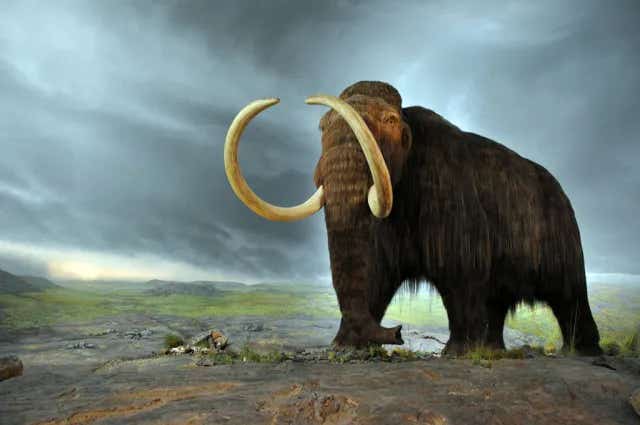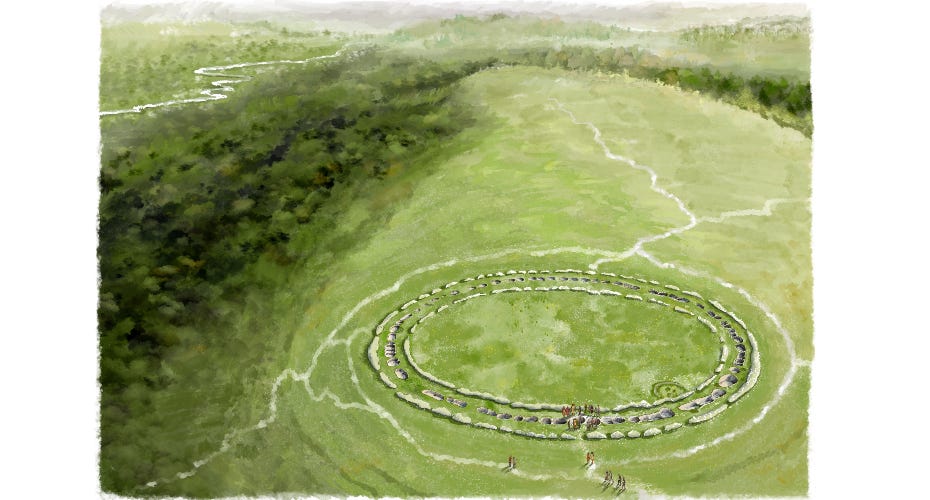Researchers reveal a complete history of primate evolution
Scientists build the most complete primate evolutionary tree yet, mapping 98% of species using genetic data and published research.

Researchers used existing DNA data and thousands of studies to build the most complete evolutionary tree of primates to date. (CREDIT: VICTOR HABBICK VISIONS / SCIENCE PHOTO LIBRARY)
The story of primates is a tale of incredible variety and ancient roots, told through the lens of science, DNA, and time itself. These creatures, ranging from massive gorillas to tiny mouse lemurs, represent one of the most studied and recognizable groups on Earth. But despite decades of research, scientists have only recently come close to completing a full picture of their evolutionary history.
That picture (below) comes in the form of a “timetree”—a phylogenetic tree that not only shows how species are related, but also when each split occurred in evolutionary history. The idea is simple: build a complete evolutionary timeline of every known primate species. The process, however, is anything but simple.
A Rich and Varied Family Tree
The primate order includes 462 species listed in the NCBI taxonomy database. These fall into three major groups: 172 Old World monkeys and apes (Catarrhini), 146 New World monkeys (Platyrrhini), and 144 lemurs, lorises, and galagos (Strepsirrhini). They’re not just scientifically significant—they’re also fascinating in their behaviors and adaptations. Chimpanzees use tools to fish termites from logs, and orangutans use leaves as gloves to protect their hands while handling sharp or spiny fruit.
These animals are closely related to humans and provide key insights into how species evolve and adapt. But until now, scientists lacked a complete evolutionary timeline that includes them all.
The most recent and detailed phylogenomic tree assembled to date included 239 primate species. Built by combining 187 newly sequenced genomes with 52 previously available ones, this effort covered about 52% of all known primate species in the NCBI taxonomy. This tree gives scientists an essential framework for understanding how these species are related and how long ago they diverged.
At the same time, another major project, the TimeTree (TT) database, synthesized over 4,100 published timetrees. This resulted in a larger tree of 400 primate species, with 200 species overlapping with the phylogenomic tree and five species unique to the PG tree. Altogether, the PG and TT trees cover 405 unique primate species. That leaves 57 species still missing from the full picture.
Seven of these species don’t have any molecular data in GenBank, the central database for DNA sequences, and thus can’t yet be placed on a molecular timetree. For the remaining 50, researchers had to find creative ways to bring them into the fold.
Related Stories
Why Evolutionary Trees Matter
Understanding evolutionary relationships among species helps answer big questions in science. Timetrees can show when species appeared, how quickly they evolved, and how climate or geography may have influenced that process.
They’re not just academic tools. These trees guide important work in conservation by highlighting which species are unique or particularly at risk. Phylogenies also help scientists detect evolutionary trends and patterns that could otherwise go unnoticed.
"These trees are essential tools," one researcher said, "because they help us assess biodiversity loss and plan conservation in a scientifically sound way."
Despite their importance, complete evolutionary trees are surprisingly rare. Although the NCBI taxonomy contains DNA sequence data for nearly 500,000 species, only about 150,000 species are included in TimeTree. Most phylogenies found in research papers are small, averaging only 25 species per tree. These usually focus on very specific groups, such as one genus or family.
That’s a problem for scientists who want to understand evolution on a larger scale. And it means that building a true Tree of Life—one that covers every living species—requires combining thousands of smaller studies into a larger, unified whole.
Building a More Complete Tree
To solve this problem, scientists have come up with a new way forward. Instead of waiting for new studies on every species, they are now combining what’s already available. This includes untimed trees, which are far more common than timed ones. By adding timing information from the scientific literature, researchers can turn these untimed trees into valuable parts of the global timetree.
Also helpful is the wealth of DNA sequence data already sitting in public databases like GenBank. Many species that have never been included in a published phylogeny still have DNA sequences available, waiting to be used.
Using this strategy, scientists created a new supertree of 455 primate species. That’s 98% of all primates in the NCBI taxonomy and 55 more than the previous largest collection in TimeTree. This is the most complete view of primate evolution available today.
"This approach shows we don’t always need new data," a team member explained. "Sometimes, we just need to better use the data we already have."
What the New Tree Tells Us
With a more complete tree in hand, scientists can ask deeper questions about primate evolution. One question they explored is whether certain primate groups evolve faster than others. Do some lineages produce new species more quickly? Or do older groups simply have more time to accumulate species?
The results were revealing. The major primate groups all had similar rates of speciation. The biggest predictor of how many species a group contains wasn’t its speed of evolution—it was how long the group has existed. This kind of analysis is only possible with a complete and timed tree. Missing species or inaccurate dates would have skewed the results.
These findings help explain why some groups, like Old World monkeys, contain more species than others. It’s not necessarily because they’re evolving faster—it’s because they’ve had more time.
Looking Ahead: A Complete Tree of Life
The success of the primate timetree project suggests that scientists may be able to build similar trees for other major groups of life. Much of the data already exists. The challenge is putting it all together in a meaningful and accurate way.
By using available DNA sequences, published phylogenies, and smart computational tools, researchers are showing that comprehensive evolutionary trees are within reach—even for groups as diverse as primates.
As one expert put it, “We envision our research protocol as an accessible and, ultimately, extremely valuable tool in our efforts to understand evolution.”
That’s good news not just for science, but for conservation, education, and our understanding of life on Earth. A complete timetree is no longer just a dream—it’s becoming a reality, species by species, branch by branch.
Note: The article above provided above by The Brighter Side of News.
Like these kind of feel good stories? Get The Brighter Side of News' newsletter.
Mac Oliveau
Science & Technology Writer | AI and Robotics Reporter
Mac Oliveau is a Los Angeles–based science and technology journalist for The Brighter Side of News, an online publication focused on uplifting, transformative stories from around the globe. Passionate about spotlighting groundbreaking discoveries and innovations, Mac covers a broad spectrum of topics—from medical breakthroughs and artificial intelligence to green tech and archeology. With a talent for making complex science clear and compelling, they connect readers to the advancements shaping a brighter, more hopeful future.



